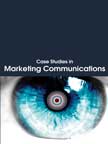Marketing Management
 |
Details
Textbook:
Pages : 500;
Paperback;
210 X 275 mm approx.
Workbook:
Pages :
282; Paperback;
210 X 275 mm approx, Sample Applied Theory Questions
Pricing
Textbook Price: Rs. 900;
Workbook Price: Rs. 700;
Available only in INDIA
Buy Now
Please allow 5 to 10 days for delivery.
Detail Table of Contents
Product and Product Lines : Chapter 11
SUMMARY:
A product can be a good, a service, an idea, or a combination of all these. It consists of a bundle of tangible and intangible attributes that satisfy consumers and is received in exchange for money. The components of product personality cover its core features and its associated features. Levitt differentiated products on the basis of the value they provide to customers. The categories are generic products, expected products, augmented products and potential products. |
|
shopping products, (c) specialty products and (d) unsought products. Industrial products can be further divided into production goods and support goods. There are various limitations in classifying a product, (a) a single product can be deemed as both a consumer product and an industrial product, (b) the perception of one consumer may be different from that of other consumers and (c) customers do not behave rationally all the time.
The product mix is the set of all the products that an organization offers to its customers. It can be characterised in terms of its features like width, length, depth and consistency. Marketers use various strategies to manage their product mix effectively, like (a) expansion of product mix, (b) contraction of product mix, (c) altering existing products, (d) positioning the product, (e) trading up and (f) trading down.
The product mix consists of a number of product lines. An analysis of product lines helps marketers to make important decisions with regard to product line length, line modernization and pruning. The limitations of product line extension are (a) creation of weaker lines, (b) lowering brand loyalty, (c) under exploitation of ideas, (d) stagnant demand, etc.
A product life cycle usually comprises of four stages i.e., introduction, growth, maturity and decline. An analysis of PLC gives marketers useful information required to manage profitable products and discard the unprofitable ones. The introduction stage is marked by zero profits and negative sales. The growth stage witnesses an increase in sales, and is marked by heavy demand. At a later stage of growth, profits begin to decline. The sales tend to grow, stabilize and then decline in the maturity stage. In the decline stage, sales show a downward drift and profits are usually eroded. Each stage of PLC calls for the application of different marketing strategies.



